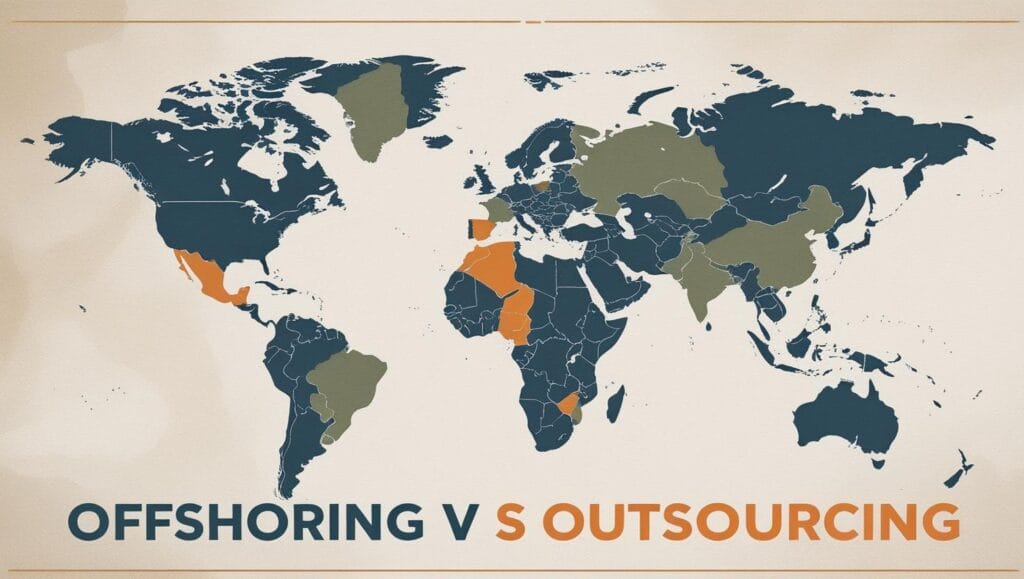Demystifying the Economy: What Are the Components of National Income?
Disclaimer: This post may contain affiliate links. If you make a purchase through these links, we may earn a commission at no extra cost to you. This helps support our work in providing high-quality content.
Ever wonder how economists on the news can talk about the “health” of the U.S. economy? They throw around terms like GDP, GNP, and disposable income as if everyone knows what they mean. For many Americans, these terms can feel like a foreign language. Yet, understanding them is crucial because they paint a picture of our country’s economic performance and, ultimately, can impact our jobs, our savings, and our financial future.
At its core, national income is the total value of all goods and services produced within a country over a specific period, usually a year. It’s the ultimate report card for a nation’s economic activity. But it’s not just one single number. It’s a collection of several key components that, when viewed together, give a comprehensive overview. If you’re new to this concept, starting with a clear understanding of what national income is can be incredibly helpful. For a great primer, check out this excellent article that helps to define national income in simple terms.
Key Takeaways
- National income measures the total economic performance of a country.
- Gross Domestic Product (GDP) is the most common measure, representing the total value of goods and services produced within a country’s borders.
- Gross National Product (GNP) adjusts GDP by including income earned by citizens abroad and excluding income earned by foreigners domestically.
- Net National Product (NNP) is GNP minus depreciation, accounting for the “wear and tear” on a country’s assets.
- Personal Income (PI) and Disposable Personal Income (DPI) measure the income households actually receive and the amount they have left after taxes, respectively.
- These components provide different but related perspectives on a nation’s economic well-being.
1. Gross Domestic Product (GDP): The Headline Figure
When you hear a news report about the economy growing or shrinking, they are almost always talking about Gross Domestic Product (GDP). It is the most widely used measure of a country’s economic output. GDP represents the total monetary value of all final goods and services produced and sold within a country’s borders during a specific period.
Think of it as the total price tag of everything made in America in a year—from every Ford truck rolling off the assembly line in Michigan to every latte sold at a coffee shop in Seattle. The key word here is “domestic”—it doesn’t matter who owns the company; if the production happens on U.S. soil, it counts towards the U.S. GDP.
How is GDP Calculated? The Expenditure Approach
The most common way to calculate GDP is the expenditure approach, which sums up all the spending in the economy. The formula is:
GDP = C + I + G + (X – M)
- C (Consumption): This is the largest component of U.S. GDP. It represents all spending by households on goods (like groceries and cars) and services (like haircuts and doctor’s visits). It’s a direct measure of consumer confidence and spending power.
- I (Investment): This doesn’t mean stocks and bonds. In economics, investment refers to business spending on new equipment, buildings, and software. It also includes household purchases of new homes and changes in business inventories.
- G (Government Spending): This includes all spending by federal, state, and local governments on goods and services, such as defense, infrastructure projects (roads, bridges), and the salaries of government employees. It does not include transfer payments like Social Security or unemployment benefits, as those are not payments for goods or services.
- (X – M) (Net Exports): This is the value of a country’s total exports (X) minus the value of its total imports (M). If a country exports more than it imports, this number is positive and adds to GDP. For the U.S., which typically runs a trade deficit (importing more than it exports), this number is usually negative.
Understanding GDP is foundational to economics. For anyone looking to get a solid grasp of this and other core principles, a classic textbook is often the best resource.

Principles of Economics by N. Gregory Mankiw
Considered the gold standard for introductory economics, this book breaks down complex topics like GDP, supply and demand, and monetary policy into easily understandable concepts. A must-have for students or anyone curious about how the economy really works.
View on Amazon2. Gross National Product (GNP): A Citizen-Focused View
While GDP focuses on production within a country’s borders, Gross National Product (GNP) takes a slightly different approach. It measures the total value of all final goods and services produced by the citizens of a country, regardless of where in the world they are located.
For example, the profits from a Ford factory in Mexico would be counted in Mexico’s GDP but in the U.S.’s GNP because Ford is an American company. Conversely, the profits from a Toyota factory in Kentucky would be included in U.S. GDP but in Japan’s GNP.
The Formula for GNP
The relationship between GDP and GNP is straightforward:
GNP = GDP + Net Factor Income from Abroad (NFIA)
Net Factor Income from Abroad (NFIA) is the income earned by a country’s citizens and companies abroad minus the income earned by foreign residents and companies within the country. For the United States, GDP and GNP are relatively close in value, but for countries with many citizens working abroad (like the Philippines) or a large multinational presence, the difference can be significant.
In 1991, the United States officially switched from using GNP to GDP as its primary measure of economic production to better align with the practices of other countries and to provide a more accurate picture of domestic economic activity.
3. Net National Product (NNP): Accounting for Wear and Tear
Imagine a factory that produces $1 million worth of goods. In the process, its machinery undergoes wear and tear, reducing its value. GDP and GNP don’t account for this depreciation. That’s where Net National Product (NNP) comes in.
NNP provides a more accurate picture of a country’s sustainable production level by subtracting the value of capital that was used up during the production process. This “used up” capital is called depreciation, or the “Consumption of Fixed Capital.”
The Formula for NNP
Calculating NNP is simple once you have the GNP figure:
NNP = GNP – Depreciation
Think of it this way: GNP is like your total salary, while NNP is like your salary after you’ve set aside money to repair your car so you can keep getting to work. It’s a measure of the net output available for consumption and investment without diminishing the country’s capital stock. While less cited in the media than GDP, many economists believe NNP is a superior measure of a nation’s economic well-being because it accounts for the sustainability of production.
Why Depreciation Matters
A country could temporarily boost its GNP by running its factories and infrastructure into the ground, but this isn’t sustainable. NNP reveals whether a country’s growth is coming at the expense of its long-term productive capacity. A consistently high GNP paired with a rapidly declining NNP could be a red flag for its economic future.
4. National Income (NI): Where the Money Actually Goes
After we have NNP, we can make a few more adjustments to arrive at what economists specifically call National Income (NI). While NNP measures the net value of goods and services produced, NI measures the total income earned by the factors of production (land, labor, capital, and entrepreneurship). It tells us how the value created by production is distributed as wages, rents, interest, and profits.
To get from NNP to NI, we must account for indirect business taxes and subsidies.
The Formula for National Income
NI = NNP – Indirect Business Taxes + Business Subsidies
- Indirect Business Taxes: These are taxes like sales tax, property tax, and excise taxes that businesses pay, but then pass on to consumers in the price of goods. Since this money goes to the government and not to factors of production, it’s subtracted from NNP.
- Business Subsidies: These are payments from the government to businesses (e.g., farm subsidies) that are not made in exchange for goods or services. They are considered income for the factors of production, so they are added back in.
National Income is a critical measure because it breaks down the economic pie and shows who is earning what. It is typically broken down into these five categories:
- Compensation of employees: Wages, salaries, and benefits paid to workers. This is the largest component.
- Proprietors’ income: Income of self-employed individuals and unincorporated businesses.
- Rental income: Income earned from property.
- Corporate profits: Profits of corporations.
- Net interest: Interest paid by businesses minus the interest they receive.

The Intelligent Investor by Benjamin Graham
Understanding national income trends can inform smart investment decisions. Hailed by Warren Buffett as “by far the best book on investing ever written,” this classic provides a timeless framework for analyzing businesses and making sound long-term investments, connecting macroeconomic trends to personal finance.
View on Amazon5. Personal Income (PI): What Households Actually Receive
National Income (NI) tells us what is earned, but it doesn’t tell us what households actually get in their pockets. For example, corporations earn profits (part of NI), but they don’t distribute all of it to households; they keep some as “retained earnings” for future investment. Also, households receive income that they didn’t “earn” in the current period, like Social Security checks or unemployment benefits (these are called transfer payments).
Personal Income (PI) is the total income received by individuals and households from all sources before they pay personal income taxes.
The Formula for Personal Income
To get from National Income to Personal Income, we make the following adjustments:
PI = NI – Corporate Profits – Taxes on Production and Imports – Social Security Contributions + Government Transfer Payments + Personal Interest and Dividend Income
This calculation essentially removes the income that was earned but not received (like retained corporate earnings) and adds the income that was received but not earned (like government checks). PI is a very important indicator because it’s closely linked to consumer spending, which, as we saw in the GDP formula, is the biggest driver of the U.S. economy.
6. Disposable Personal Income (DPI): The Bottom Line
Finally, we arrive at the most practical and relatable component of national income: Disposable Personal Income (DPI). This is the amount of money that households have left to spend or save after they have paid their personal taxes (like federal and state income tax).
The Formula for Disposable Personal Income
DPI = Personal Income – Personal Taxes
DPI is the bottom line for American families. It’s the money you actually have control over. It’s what you use to buy groceries, pay your mortgage, save for retirement, or go on vacation. When DPI is rising, consumers have more money to spend, which can fuel economic growth. When it’s falling, consumer spending tends to contract, which can slow the economy down. The U.S. Bureau of Economic Analysis (BEA) reports on DPI monthly, and it’s a key metric watched by economists, policymakers, and investors.
| Component | What It Measures | Key Characteristic |
|---|---|---|
| GDP (Gross Domestic Product) | Production within a country’s borders | Location-based (Domestic) |
| GNP (Gross National Product) | Production by a country’s citizens | Ownership-based (National) |
| NNP (Net National Product) | GNP minus depreciation | Accounts for capital wear & tear |
| NI (National Income) | Total income earned by factors of production | Shows how income is distributed (wages, profit) |
| PI (Personal Income) | Total income received by households | Pre-tax income for individuals |
| DPI (Disposable Personal Income) | Personal Income minus personal taxes | After-tax income for spending or saving |
Conclusion: A Holistic View of the Economy
Understanding the components of national income is like having a full diagnostic panel for the economy. GDP might be the main number you hear about, but the other measures provide crucial context and a deeper understanding.
- GDP tells us about the level of economic activity on U.S. soil.
- GNP tells us how much income Americans are earning globally.
- NNP shows if our growth is sustainable.
- NI breaks down who is benefiting from that growth.
- PI and DPI tell us about the actual financial health of American households and their ability to drive the economy forward through spending and saving.
By looking at all these pieces together, we can move beyond the headlines and gain a more nuanced and accurate picture of where the U.S. economy stands and where it might be headed. This knowledge isn’t just for economists; it empowers all of us to be more informed citizens, consumers, and investors in an increasingly complex world.


